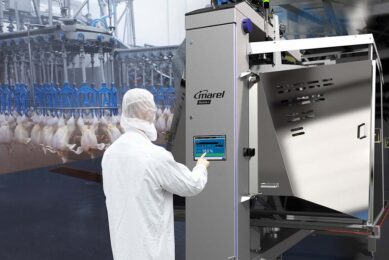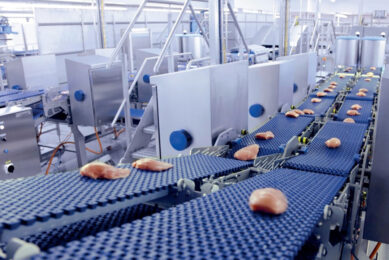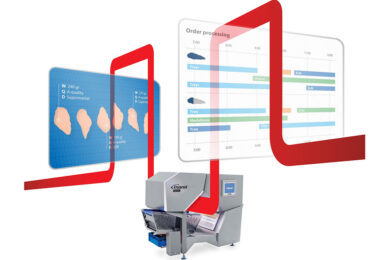Combatting labour shortage in Southeast Asia
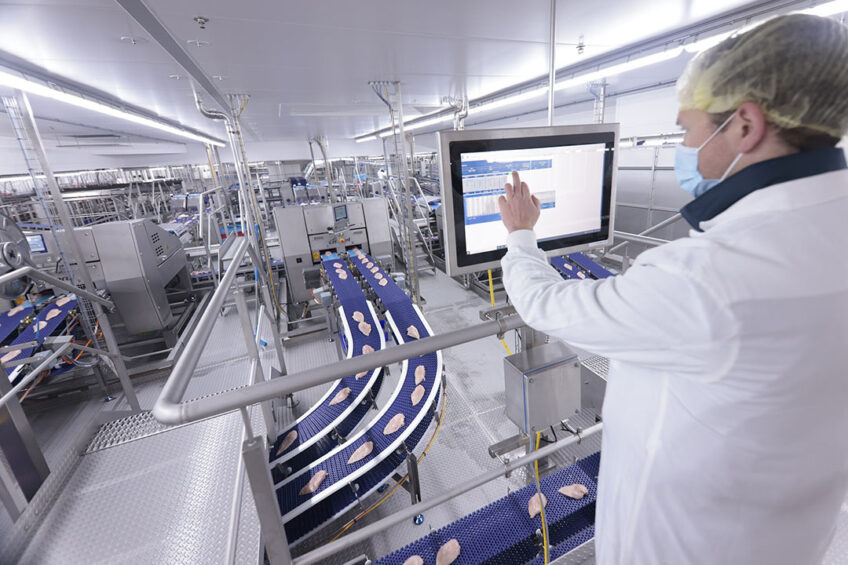
Virtually all poultry processors in the Southeast Asian region – and elsewhere in the world – today will cite finding skilled labour as the number one challenge in their operations. To tackle these labour issues, automated and digital solutions are accessible for poultry processors, such as in the cut-up area demonstrated by Marel.
In recent years, the population of Southeast Asia has seen a remarkable increase, leading to corresponding growth in the economies of countries such as Indonesia, Thailand, and Vietnam. In the poultry industry, Asia is by far the world’s fastest-growing region, consumption-wise and production-wise. The growing number of consumers with rising incomes means more purchasing power and leads to an increase in demand for food and a change in eating habits.
Higher product diversity
In response to this demand, the poultry industry in Southeast Asia must evolve to keep meeting the needs of consumers. The variety of poultry products has expanded greatly – new and more diverse products keep appearing in the market.
One significant change in Southeast Asia is the growth of quick-service (fast food) restaurants. With a growing population and higher income levels, QSR chains have quickly spread throughout the region, offering consumers a convenient and affordable dining option. The growth of QSR restaurants has a big impact on the poultry industry. Poultry producers will have new opportunities to supply an increasing diversity of high-quality poultry end products in high volumes.
The growth is expected to continue in the coming years, as the demand for poultry food and the popularity of fast-food restaurants continue to grow in the region.
Escalated shortage
The poultry industry in Southeast Asia is thriving, and therefore it needs many skilled workers. However, the difficulty in finding enough workers is holding back growth and success. The topmost priority of poultry processors in Asia, much like their counterparts elsewhere in the world, is securing and retaining competent labour. This issue already existed pre-pandemic and has further escalated since then.
A shortage of workers in the processing plant can cause big challenges. If manual jobs aren’t filled, the production line can’t continue and production halts. Customers won’t get their orders in time, possibly making them look for other suppliers.
What is the solution to this labour shortage problem? How to keep production going continuously – and even deliver more products than before – with fewer people? This will only be possible through the adoption of automation and digitalisation.
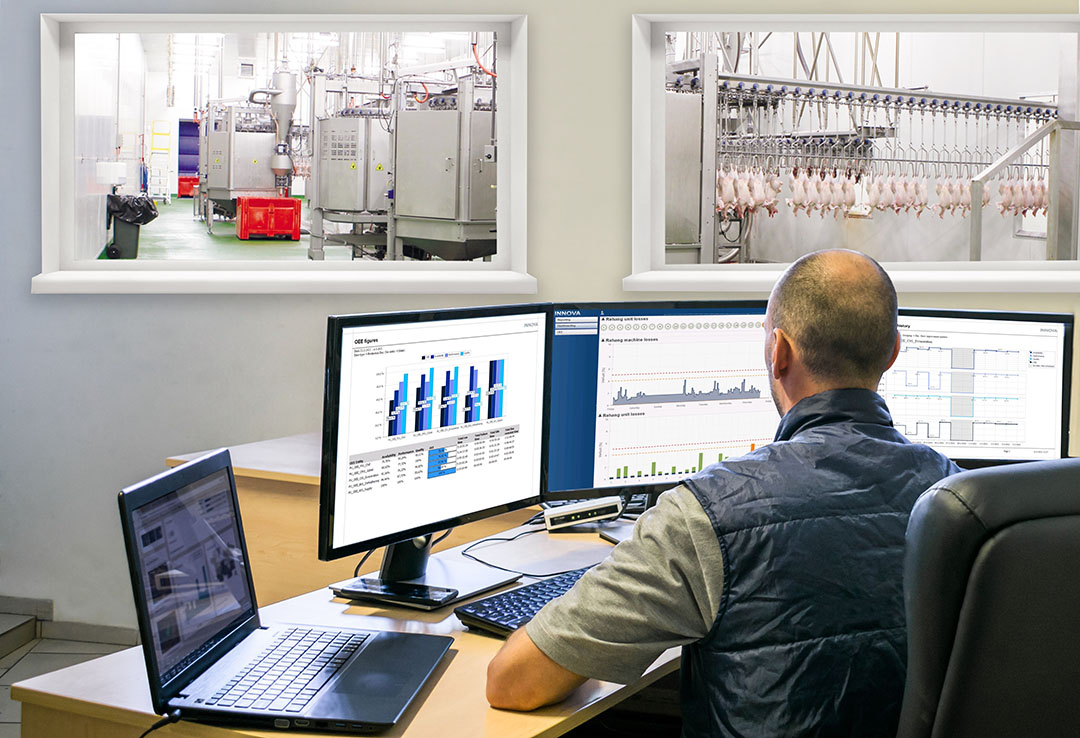
More advantages of automation
Poultry processors need automated processes that require the least human intervention to combat the skilled labour issue. Automation in poultry processing can help make work less dependent of manual labour. An automated process will also be safer, faster and more efficient with higher yields, without getting tired at the end of a shift. By using technology to perform the tough and physically demanding jobs, less skilled labour is needed and productivity will improve. Automation also reduces the chances of human error and injuries caused by fatigue. And by minimising physical contact with meat, food safety benefits too.
All areas
Automation can be the pillar for poultry processes in all departments of the plant, evisceration, cut-up, deboning, inspection, packaging and more. In the primary process, manual labour remains common in many places, such as the live bird shackling area, the evisceration room, and the giblet harvesting department. In the secondary process, grading, cut-up and deboning still rely on many human hands and judgement.
Labour-saving digitalisation
Digitalisation in poultry processing can help solve the labour shortage problem by streamlining and digitising many tasks that were previously performed by human workers.
Digital processes can take over the role of operators who always relied on their own experience to evaluate a complex issue. Instead of trusting gut feelings, data-driven decision-making depends on real-time measured information, always supplying the right reason for a line stop.
By using digital tools and processes, the grading and order-fulfilling processes can be more efficient and depend less on manual labour. Efficient digital processes can reduce the number of manual transport movements of products. They also lighten the workload of production planners and order planners by executing data-driven instructions.
Digitalisation enhances the appeal of jobs within the processing plant by offering career opportunities in areas such as data analysis and technology management. By embracing digitalisation, the poultry processing industry can become more agile and resilient, better able to adapt to changes in the labour market.
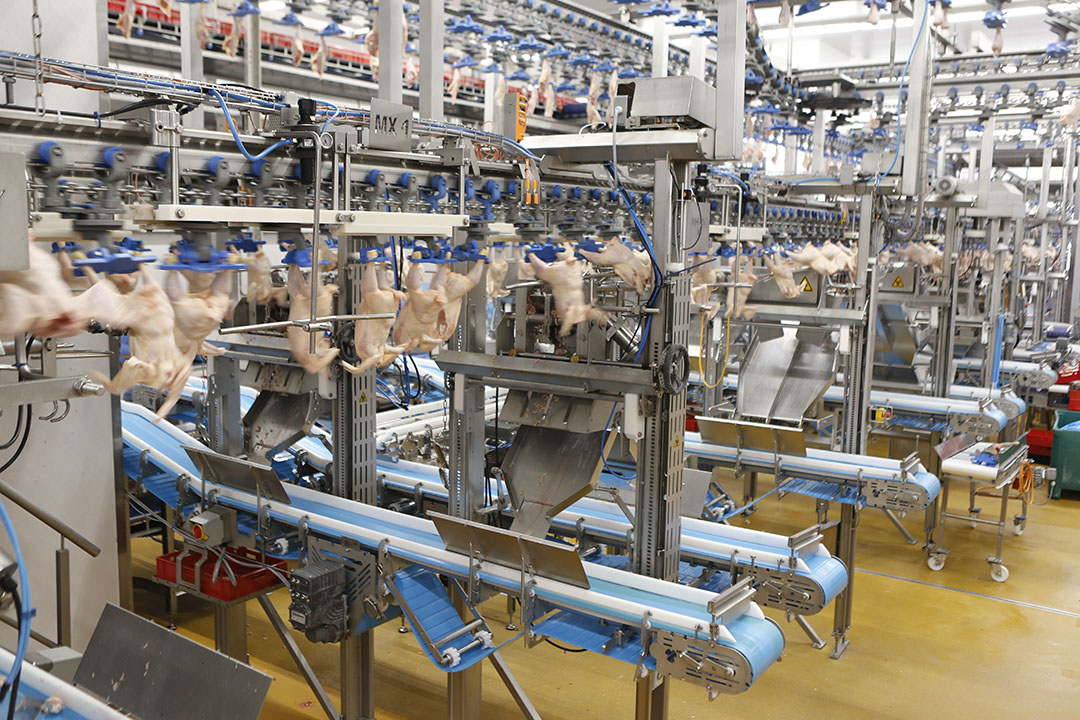
An automation example
Marel’s ACM-NT cut-up system is a perfect example of how to automate manual labour. It performs expert wing, leg and breast cuts, which could be done only manually before. ACM-NT can automate virtually every wing, front half and leg cut required by processors worldwide.
The Asian market for chicken parts has some very specific requirements. These result from traditional manual cuts usually done by skilled craftsmen. Manual cut-up is, however, no longer an option given today’s production volumes and the shortage of people. In its new ACM-NT modules, the Neck Cutter HY and the Second Joint Wing Cutter HPP, Marel has really succeeded in mimicking the hand/knife movements demanded by these cuts.
“Automation in poultry processing is focused on reducing manual labour and increasing yields at a faster pace.”
Second Joint Wing Cutter HPP – The perfect mid wing
In Asian markets, the second wing joint, also known as the wing flat, mid wing, centre wing or wingette, is a highly valued product with a higher value than breast meat. To get a perfect cut, it’s essential to keep the tip of the skin between the first and second joints closed and keep as much first-joint skin attached to it as possible. This ensures optimal product appearance and yield. Automated cutting should involve a series of precise and consistent movements, respecting superb skin coverage, intact epidermis and no cartilage damage. Marel’s Second Joint Wing Cutter HPP features a dedicated pre-incision blade for excellent presentation and high yield. Each wing is pushed into its optimal position, the machine ‘feels’ for the bone joint location and makes a consistent anatomic cut regardless of weight or shape variations.
Neck Cutter HY – Valuable neck harvesting
In Asian markets, chicken necks are a high-value product that can be eaten on a skewer, as a snack, as street food, or as part of a dish. Careful harvesting of the chicken neck should bring maximum length without damaging breast skin and meat quality, avoiding contamination from crop skin or crop fat.
Marel’s Neck Cutter HY optimises neck yield while saving labour. Additional manual work for removing residual crop skin or fat is unnecessary. The machine uses a pulling transport mechanism and a non-aggressive, spring-loaded chain that adapts to the weight and size of the chicken to cut the neck as long as possible, while maintaining breast skin quality.




